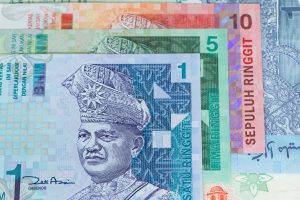The largest public savings and investment fund in Malaysia is called the Employee Provident Fund, or EPF. Enrollment in the fund is compulsory for most Malaysians working in the private sector, with a mandatory contribution of 11 percent of their annual salary. Employers also contribute. The funds are invested in a mix of stocks and bonds, and can be withdrawn by members when they reach a certain age or for other approved purposes. For instance, special withdrawals were allowed in recent years to cushion the economic impact of the pandemic.
The EPF released its headline figures for 2023 last week, and they look pretty good. Membership grew by 2.3 percent to just over 16 million. Investment income totaled 66.99 billion ringgit, which is about $14 billion. Contributions are back up after stagnating during the pandemic, which suggests the job market has rebounded. Total investment assets rose 13 percent year over year, from $212 billion to $240 billion. The dividend for conventional savings was 5.5 percent.
The EPF is a pretty straightforward example of a government-run saving and investment program. Founded in 1951, the purpose of the EPF was to force up the domestic savings rate so that the accumulated funds could be invested in the economy and generate growth.
One of the classic puzzles of economic development is that when per capita income is low, it is hard for people to save. A low savings rate means banks have less deposits from which to make loans, there’s less demand for government and corporate bonds, and investment capital is scarcer. Developing countries sometimes get trapped in a cycle where a low savings rate constrains investment and limits the ability to generate growth and raise per capita income.
To solve this, countries like Malaysia turned to compulsory savings and investment funds that forced up the national savings rate by requiring workers, whether they want to or not, to contribute a portion of their earnings. At retirement, they get paid out from the fund and in the meantime the state accumulates a large capital base for investment. Singapore has a similar saving and investment fund called the Central Provident Fund.
Malaysia’s EPF is a major source of capital for the economy. In 2023, for instance, 62 percent of the EPF’s investments (about $149 billion) were in the domestic economy. As of December 2023, the EPF held 28 percent of Malaysia’s government securities and 12 percent of the market cap of the Bursa Malaysia Top 100 Index.
As a steward for nearly a quarter trillion dollars representing the lifetime savings of most working age adults, the EPF invests relatively conservatively. Dividends are based on actual income generated by investments, rather than unrealized changes in the value of stocks and bonds held in the portfolio, which basically only exist on paper.
Some of Malaysia’s other state-run savings and investment funds have been somewhat less prudent. The most obvious example is a military pension fund called LTAT. A recent report by the Attorney General found that LTAT’s reserves have been in deficit for several years and that it has been over-stating its net profit by counting unrealized gains and non-cash profits from subsidiaries.
One of LTAT’s big subsidiaries, Boustead Holdings, has been a massive drag on the pension fund’s balance sheet thanks to a disastrous naval modernization project, among other things. According to the AG, LTAT used what we might call creative accounting in order to continue paying out dividends even as its portfolio under-performed in recent years.
It should be noted that LTAT is much smaller than the EPF, with the equivalent of about $2.5 billion in assets under management, and therefore poses much less of a systemic risk. But it does highlight the duality of forced savings policies. One the one hand, they can help to break emerging markets out of stagnant cycles of economic growth by pushing up the national savings rate. This enables capital accumulation and investment at greater scale than might otherwise be possible were everything left to the private decisions of workers, savers and businesses.
But it also means workers have to turn over a portion of their paychecks to the state, which then invests it for them on the promise they will get it back, plus a return, later in life. This is all well and good if the fund is managed conservatively and generates consistent returns. But if it doesn’t, for whatever reason, the social contract that underpins these forced savings schemes can start to fray.

































